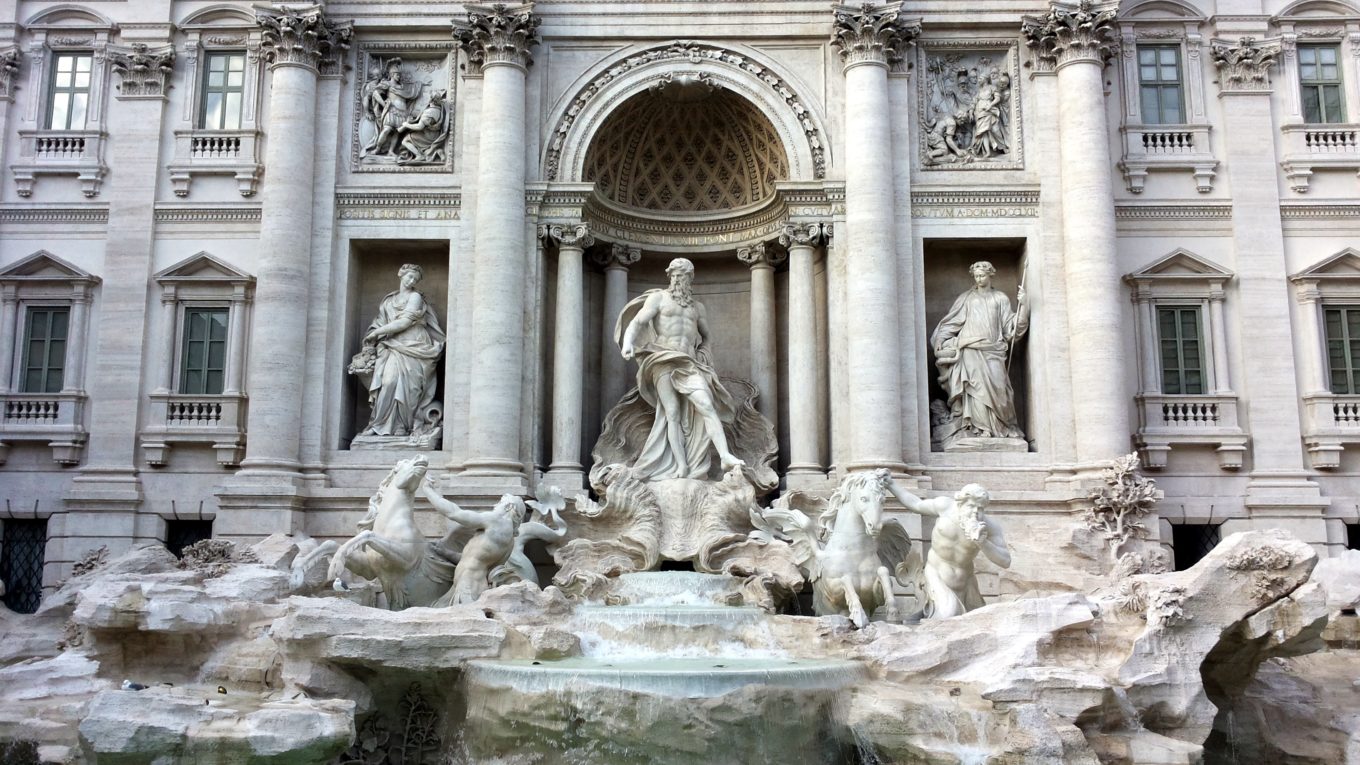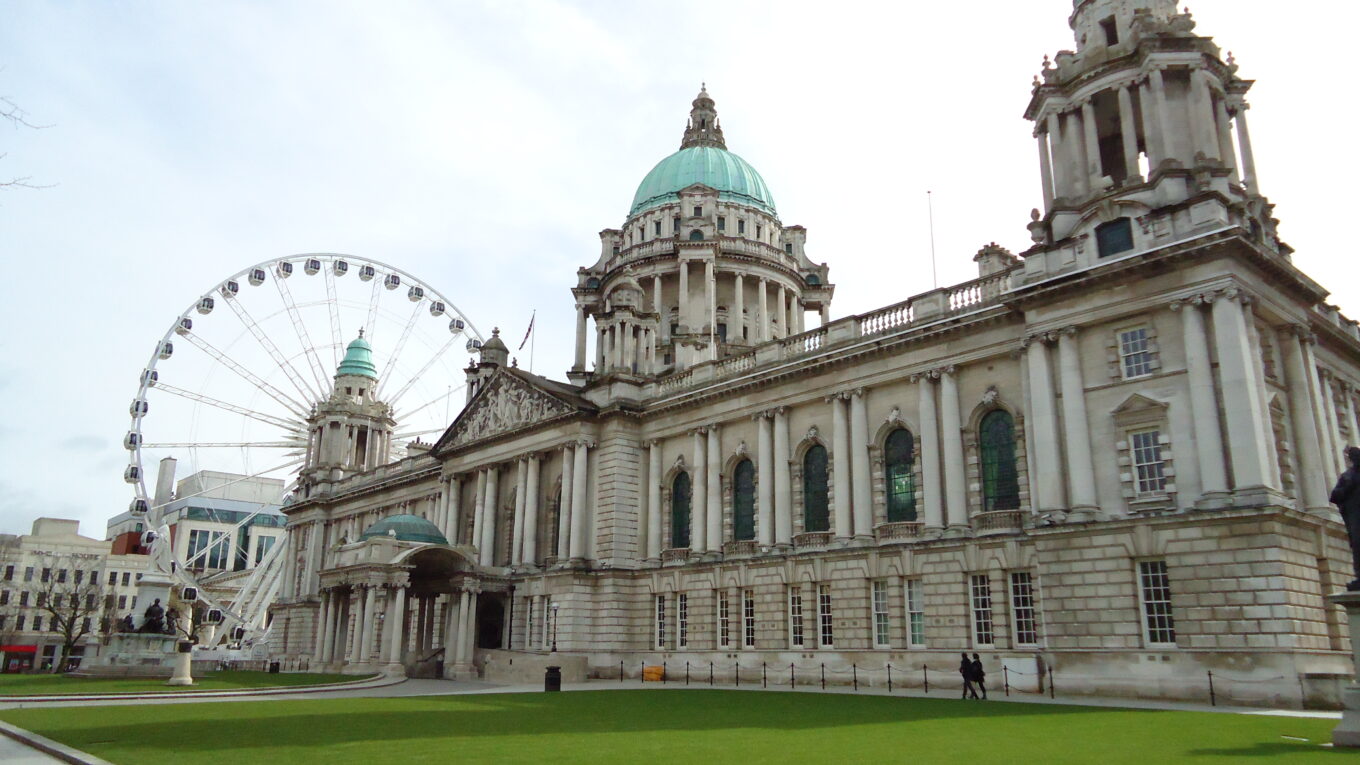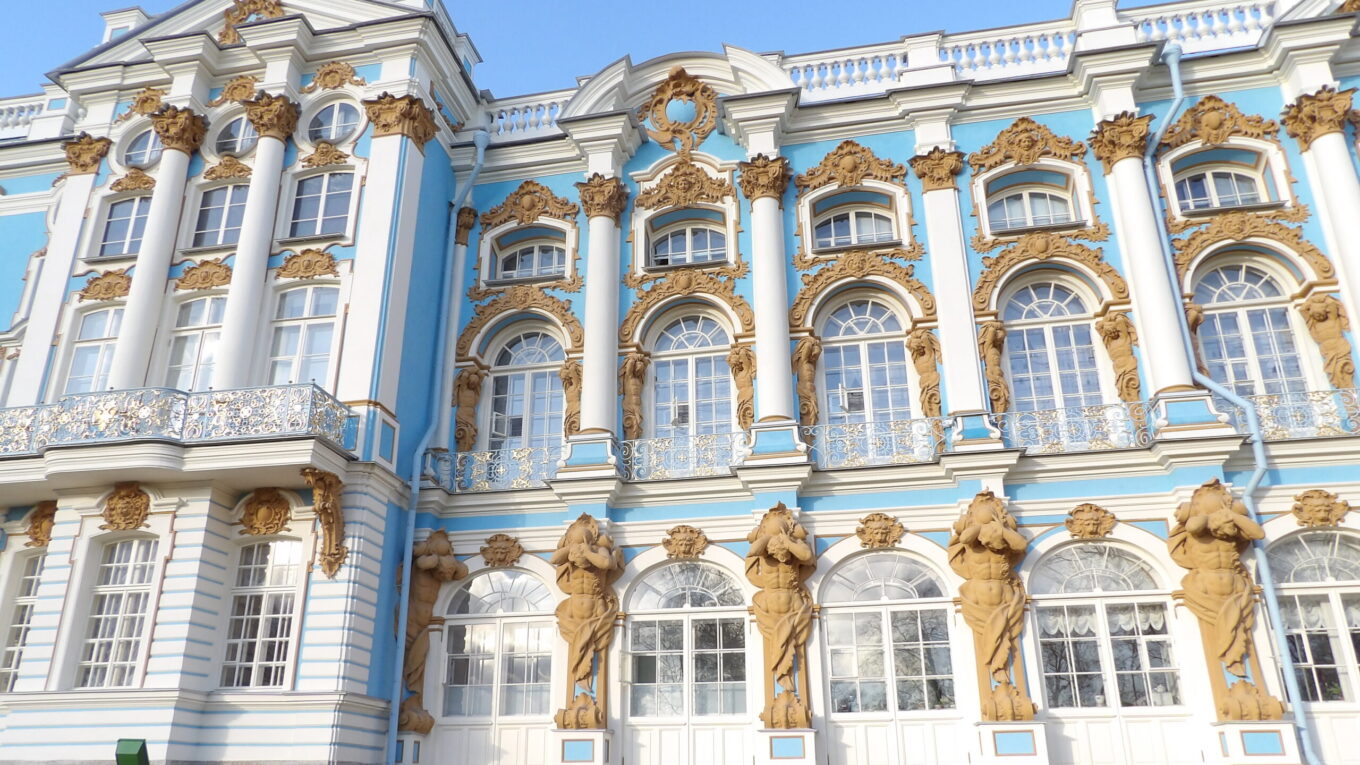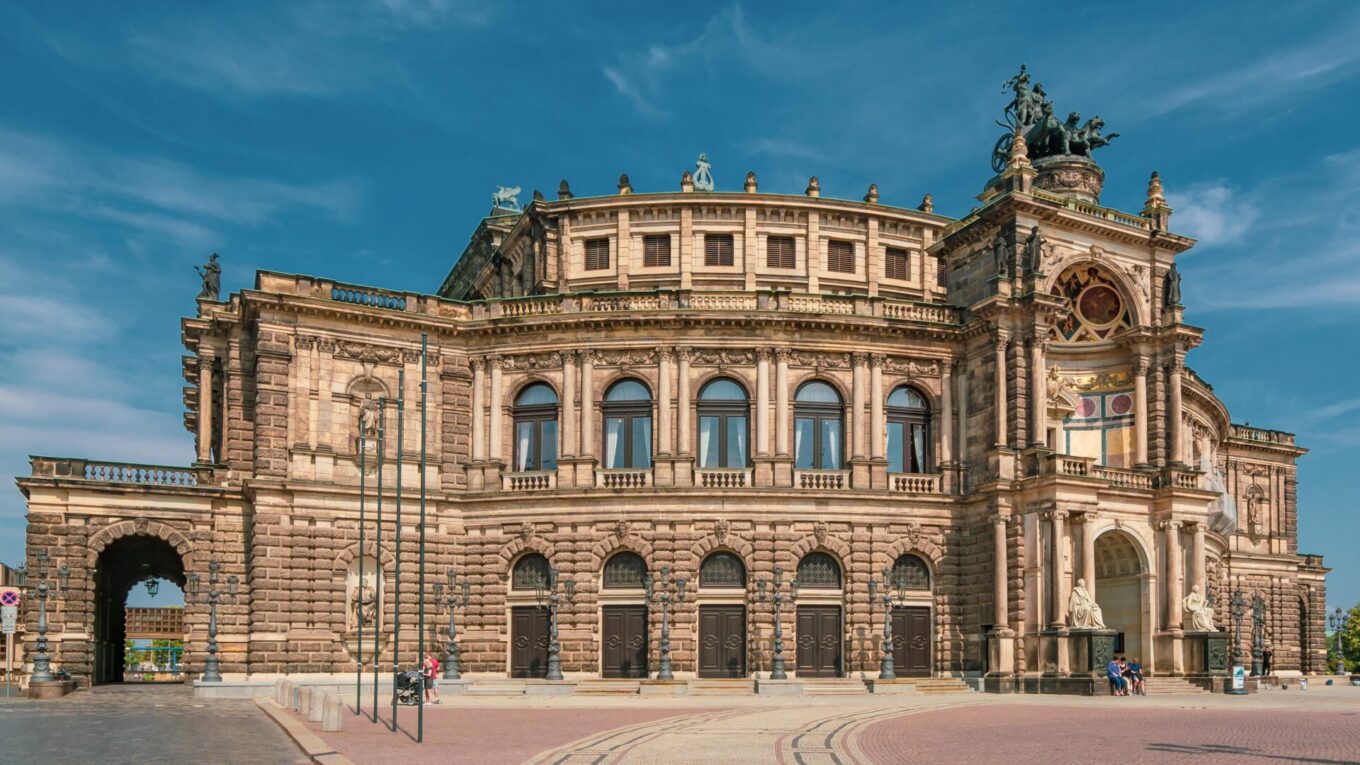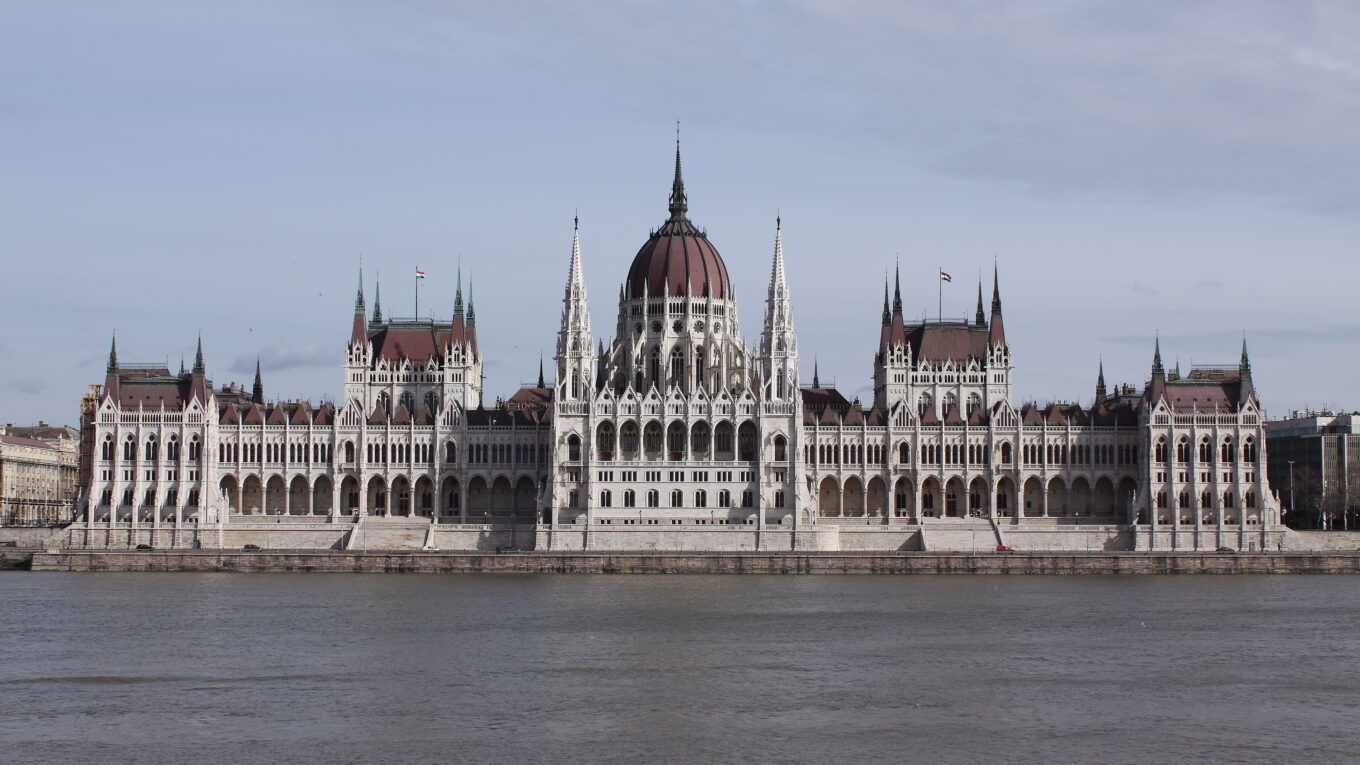Top 25 Examples of Baroque Architecture
Baroque Architecture was Europe’s dominant building style in the 17th and 18th centuries. Originating in Rome, The Baroque Style eventually spread to all of Italy, followed by mainland Europe, and then on to the rest of the world thanks to European Colonialism. Baroque Architecture emerged after the Renaissance Movement, and it is known for its exquisite details, complicated geometries, bright colors, and awe-inspiring grandeur. The art of the Baroque age was influenced by the drastic social and political changes occurring in Europe at the time; with both the Protestant Reformation and the Thirty Years’ War playing an important role. Today Baroque Architecture remains one of the key styles in European Architectural History and countless examples of Baroque Buildings can be found throughout the globe.

When was the Baroque Period?
The Baroque Period lasted from the late 16th century until the late 18th century. Below is a timeline of how Baroque Architecture fits in with other major architectural styles.
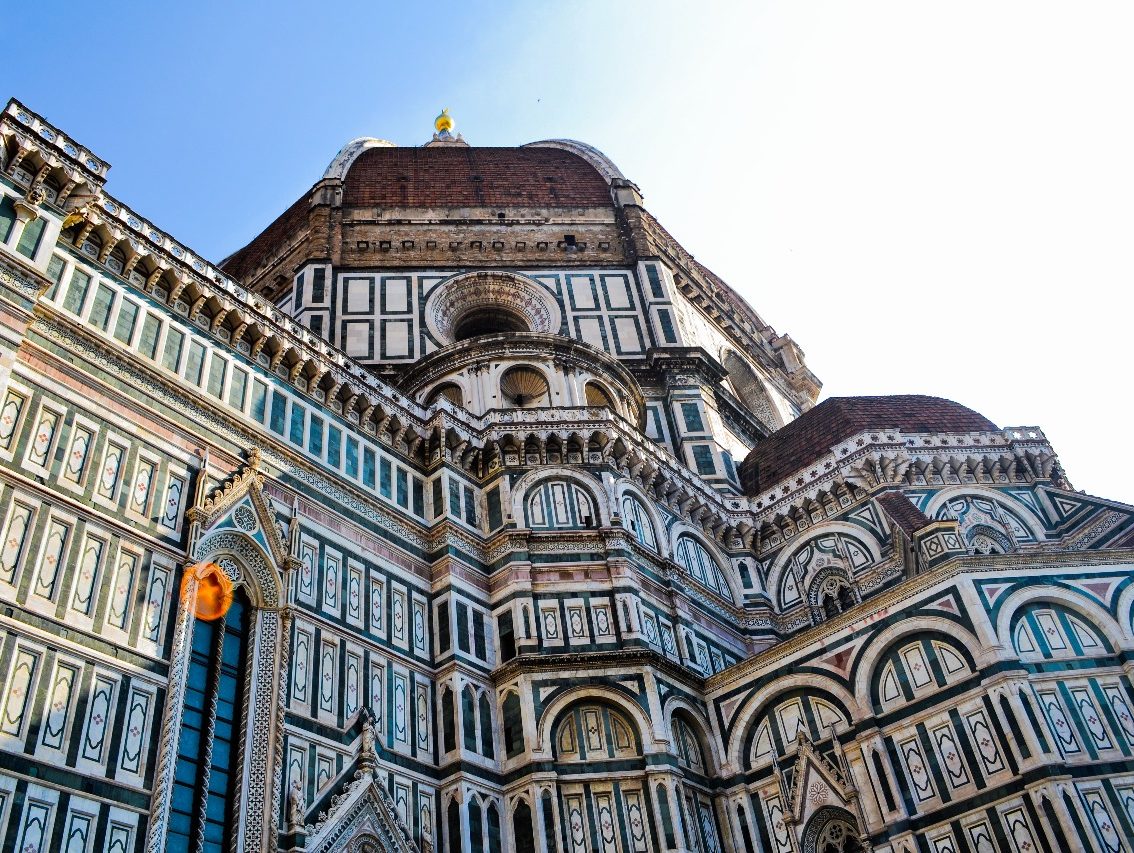
14th century – 16th century
Before the Baroque Age, there was the Renaissance Age, which emerged in Florence in the early 1400s. Many elements of Renaissance Architecture are also utilized in Baroque Buildings.
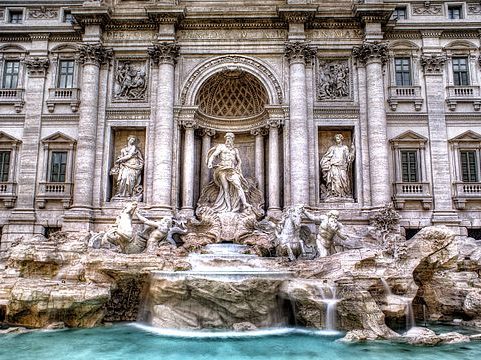
Late 16th century – Late 18th century
Some early works of Baroque Architecture were completed in Rome as early as the 1570s. By the 1600s, it had become very popular in all of Italy and eventually became Europe’s dominant style by the 1650s.

Late 18th century
In Parts of Western Europe, a new form of architecture evolved after the Late Baroque Period. It was known as Rococo, and it was a short-lived style existing mostly during the late 1700s at a time when Neoclassical Architecture was also beginning to emerge.
Phases of the Baroque Age
Early Baroque Architecture

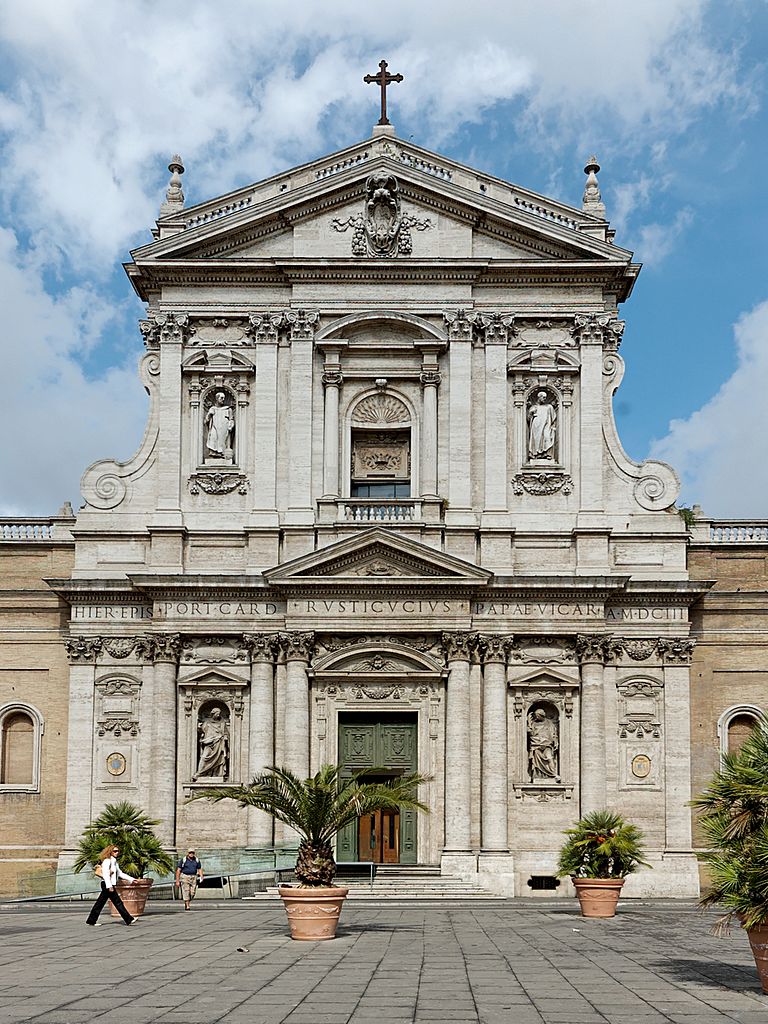
(Left) Photo by Alessio Damato from Wikimedia Commons
The First Major phase of Baroque Architecture was the Early Baroque Period. This occurred starting in the 1570s and lasted until about 1625. Many early Baroque buildings more closely resemble prior works of Renaissance Architecture when compared to later Baroque structures. In the images above you can see two front elevations from Early Baroque churches in Rome. The left image shows the Church of the Gesù which was constructed from 1568-1580 and the right image shows the Church of Saint Susanna, which was completed in 1604.
High Baroque Architecture

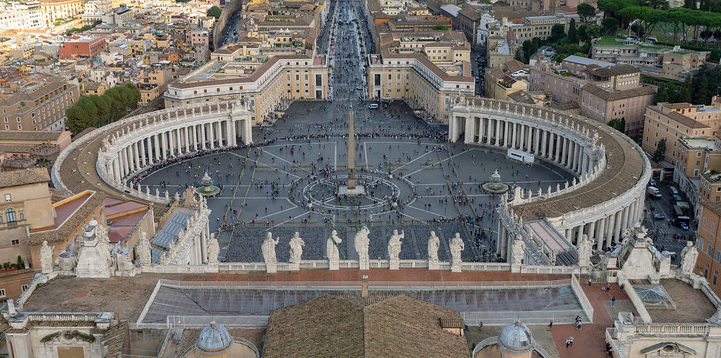
From 1625 until 1700, there was the High Baroque Period. At this point, the Baroque was extremely dominant in many parts of Europe and had really started to emerge within European Colonies in the Americas, India, China, and the rest of the Pacific. European Powers began to spend vast sums of wealth on Baroque Building projects. Two great examples of this are the Palace of Versailles in France and St. Peter’s Square, one of the most impressive Piazzas in all of Italy.
Late Baroque Architecture

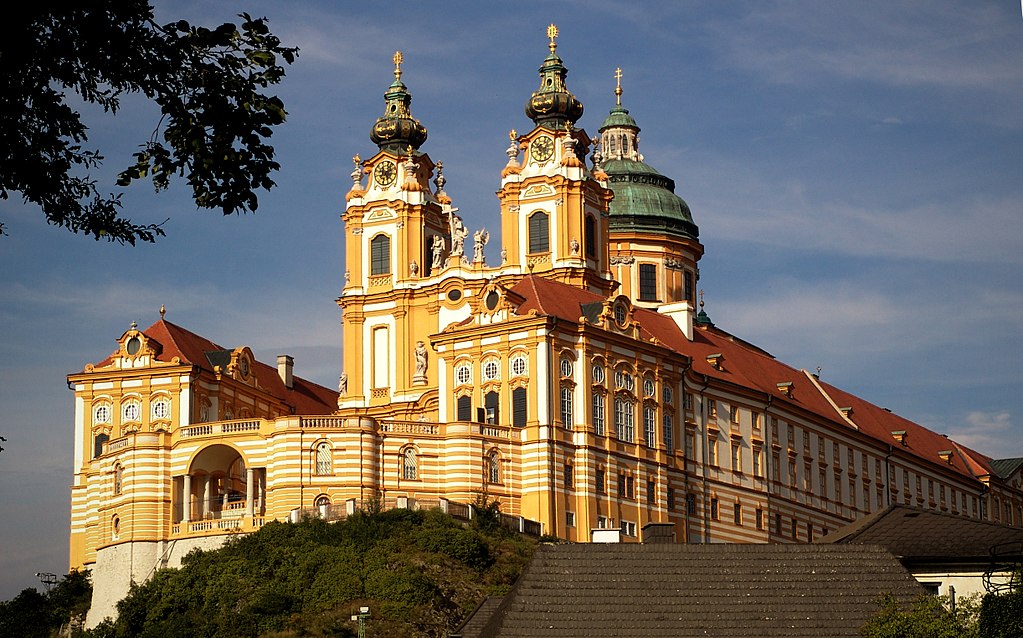
Finally, from 1700 until about 1775, the Late Baroque Period emerged. Late Baroque buildings are typically even more detailed and complex than earlier examples. It’s also in the Late Baroque Period that you start to see certain elements of the Rococo Age emerging. The front facade of Santiago de Compostela in Spain dates from this period, along with the massive Melk Abbey in Austria.
Characteristics of Baroque Architecture
Intricate Details
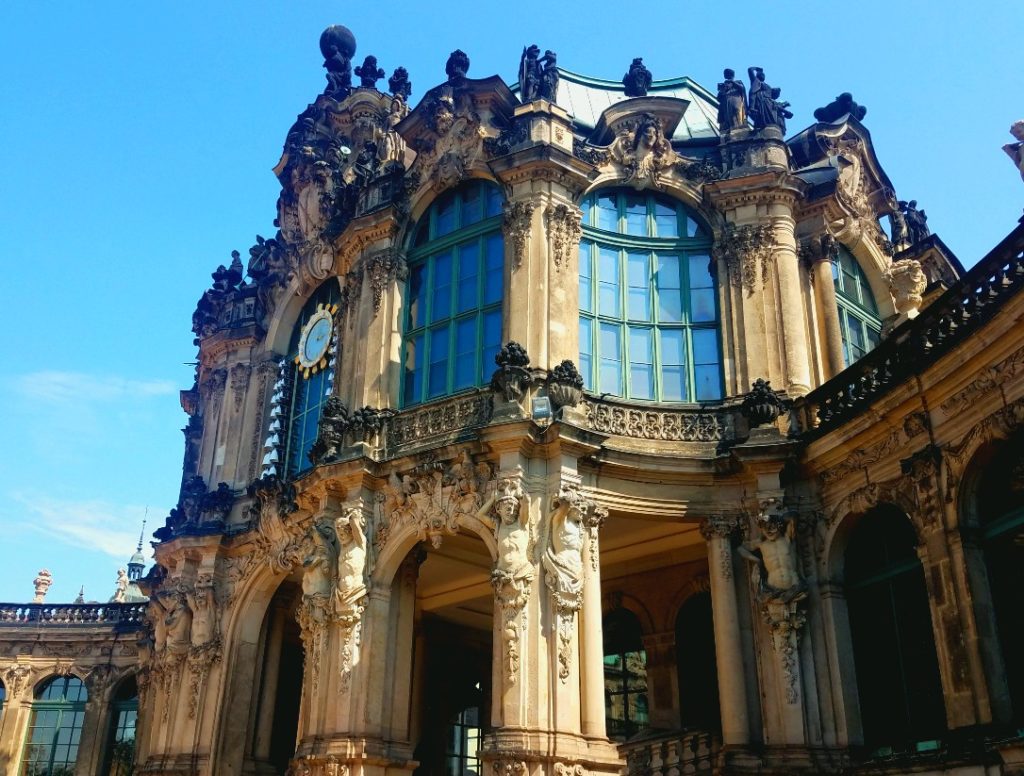
By far the most distinguishing feature of Baroque architecture is the use of elaborate and intricate details. Because Baroque buildings were meant to inspire the user, they often contained opulent and painstaking amounts of detail. These range from Baroque Sculptures and Frescoes to elaborately carved friezes, cornices, and reliefs. In the above image of the Zwinger Palace in Dresden Germany, you can see the use of fanciful details of human figures surrounded by plants, eagles, and other undulating stone carvings.
Complex Geometry
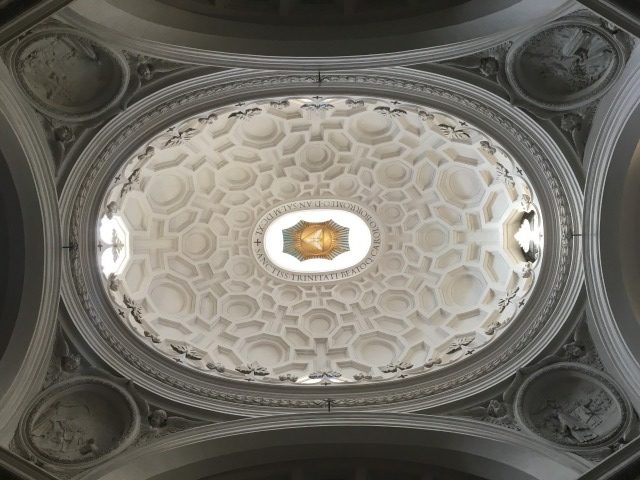
Another important evolution in Baroque Architecture is the use of complicated geometries. In the most basic sense, you can think of the difference between a circle and an oval. Renaissance buildings make great use of the circle, to create perfectly symmetrical and proportioned spaces. Baroque buildings often utilize ovals and ellipses in lieu of circles. This makes designing and building much more challenging. In the above image, you can see a dome designed by Francesco Borromini within the church of San Carlo Alle Quattro Fontane. Borromini utilized an oval for the dome, which was something that was unheard of during the Renaissance. If the use of the oval wasn’t complex enough, Borromini then divides the surface into a series of crosses and polygons, in various sizes and orientations. This is similar to the tray ceilings you see in buildings like the Pantheon, but it’s a much more complicated and intricate way of creating a similar effect.
Opulent Materials

Baroque Architecture utilizes a wide array of luxurious and extravagant materials. One of the goals of Baroque Design was to convey emotion and inspire the viewer, and oftentimes, flashy and bold materials were used to achieve this. Gold leaf became widely used, along with exquisite decorative marble in various colors. The image above shows the famous Hall of Mirrors within the Palace of Versailles in France. King Louis XIV was one of the wealthiest kings of the age, and he spent great sums of money decorating the interior of Versailles. The gold leaf, marble details, and bronze statues were all meant to show off Louis’ immense wealth, and this one room contained the largest collection of mirrors in all of Europe at that time.
Elements of Classical Architecture

Like a lot of other forms of architecture, Baroque Buildings borrow many design elements from the ancient structures of the Greeks and Romans. These include Pediments, Round Arches, and decorative Friezes. Column Capitals from the Doric, Ionic, and Corinthian Orders can also be found throughout Baroque Architecture. The image above shows the front facade of the Karlskirche in Vienna Austria. The main entrance to the church is a direct copy of a Roman or Greek temple, like the ones seen on the Pantheon in Rome or the Parthenon in Athens. You can also see two massive Triumphal Columns on either side of the entrance. They greatly resemble two Triumphal Columns in Rome, one dedicated to Trajan and the other to Marcus Aurelius.
Vibrant Colors
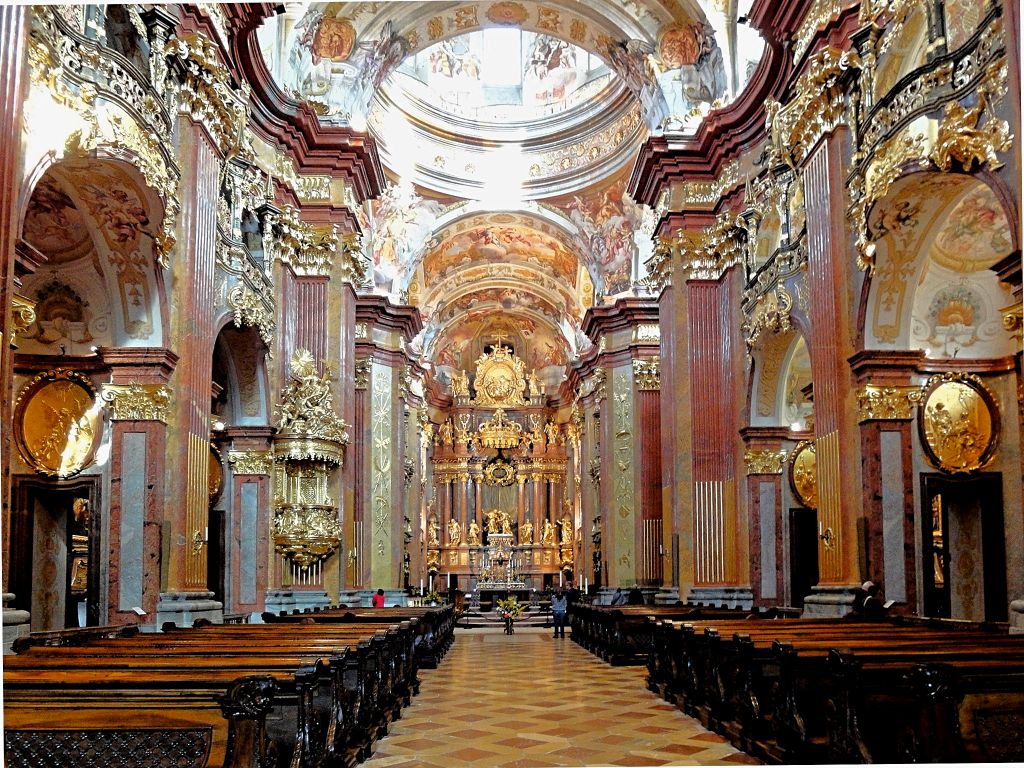
Bright colors are another unifying element found in Baroque Architecture. Many Baroque buildings have bright pastel-colored facades, and this is particularly seen in countries like Austria, Poland, and the Czech Republic. The image above shows the interior of the main church within Melk Abbey. The light pinkish-colored marble and the gold trim throughout show the use of brighter colors. Most of the ceilings within the church are decorated with large Baroque Frescoes, and these too, contain bold and lively color schemes.
Baroque Sculpture

Sculpture is another key element within Baroque Architecture. Baroque Sculpture features lively animated figures that are full of movement. The image above shows the Trevi Fountain in Rome which is decorated with several works of Baroque Sculpture. These statues depict horses and several Mythological deities, including Oceanus, a Greek Titan representing rivers and water.
Baroque Frescoes
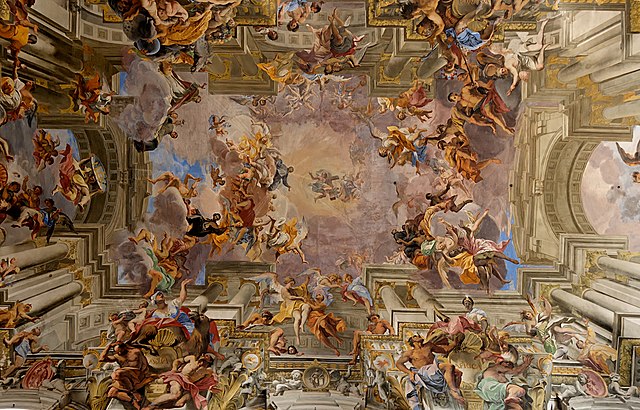
Although frescoes have been a part of architecture since ancient times, the Baroque Style utilized them in an entirely new way. Just like Baroque Sculpture, Baroque Paintings depicted lively scenes filled with all sorts of people, plants, and animals. In the above image of the church of Sant’ignazio in Rome, you can see an incredible fresco by the influential Baroque Painter Andrea Pozzo. The painting is meant to look as if the roof of the church is a view straight into the heavens. It utilizes a forced perspective to make it seem like you’re really looking up at the sky, instead of an interior ceiling.
Baroque Architecture vs. Renaissance Architecture
Baroque Architecture was an evolution of many of the elements of Renaissance Architecture. Things like rhythm, symmetry, and proportion, were important in both Renaissance and Baroque Design; and both styles borrowed elements from Classical Architecture, such as Marble Statues, Pediments, Ballistrades, and column capitals from the Classical Greek Orders. What makes Baroque Architecture different is the addition of new elements such as extremely complicated geometries, lavish materials, bright colors, and many meticulously designed details. Baroque Architecture is overall busier and more intricate and was meant to inspire and amaze local populations. Renaissance Architecture on the contrary, is more reserved and simplified, with a bigger emphasis on harmony and consistency.
The images below will show side-by-side comparisons of Renaissance and Baroque designs, highlighting the differences and similarities between them.


These two sculptures both depict David, the slayer of the giant Goliath from the Old Testament of the Bible. On the left, we see Michelangelo’s David. Michelangelo’s sculpture is well-balanced, poised, and graceful. It depicts David deep in thought, standing still and looking off into the distance. In Gian Lorenzo Bernini’s version of this same subject, you see David in motion, taking aim with his sling in hand. There’s more emotion, life, and movement in Bernini’s sculpture, and this is an idea that repeats itself over and over again in Baroque sculpture, painting, and architecture.
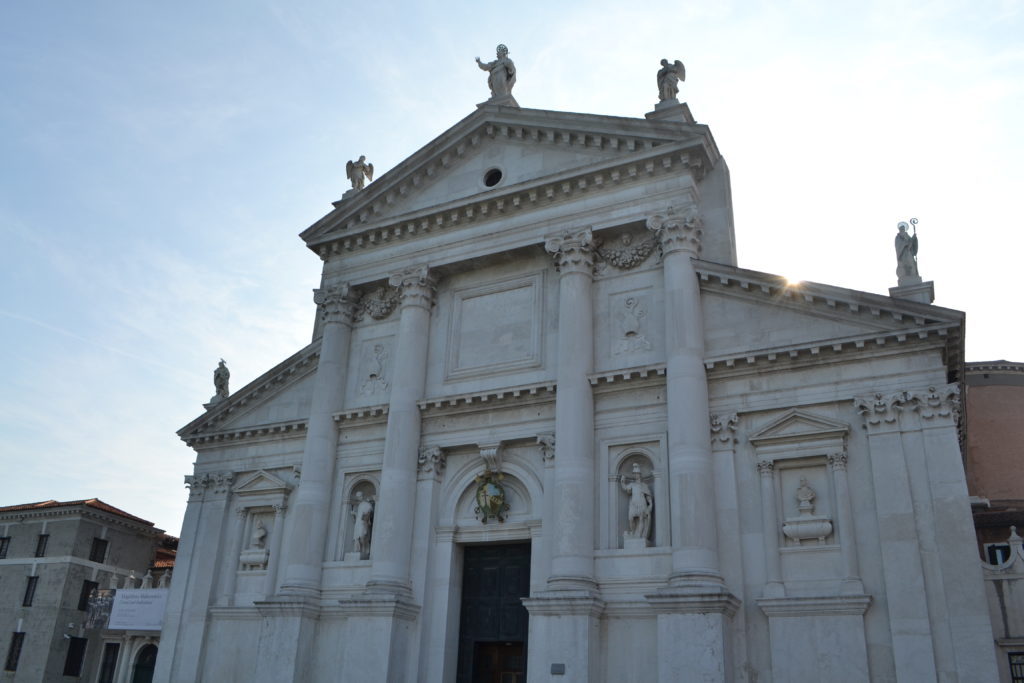
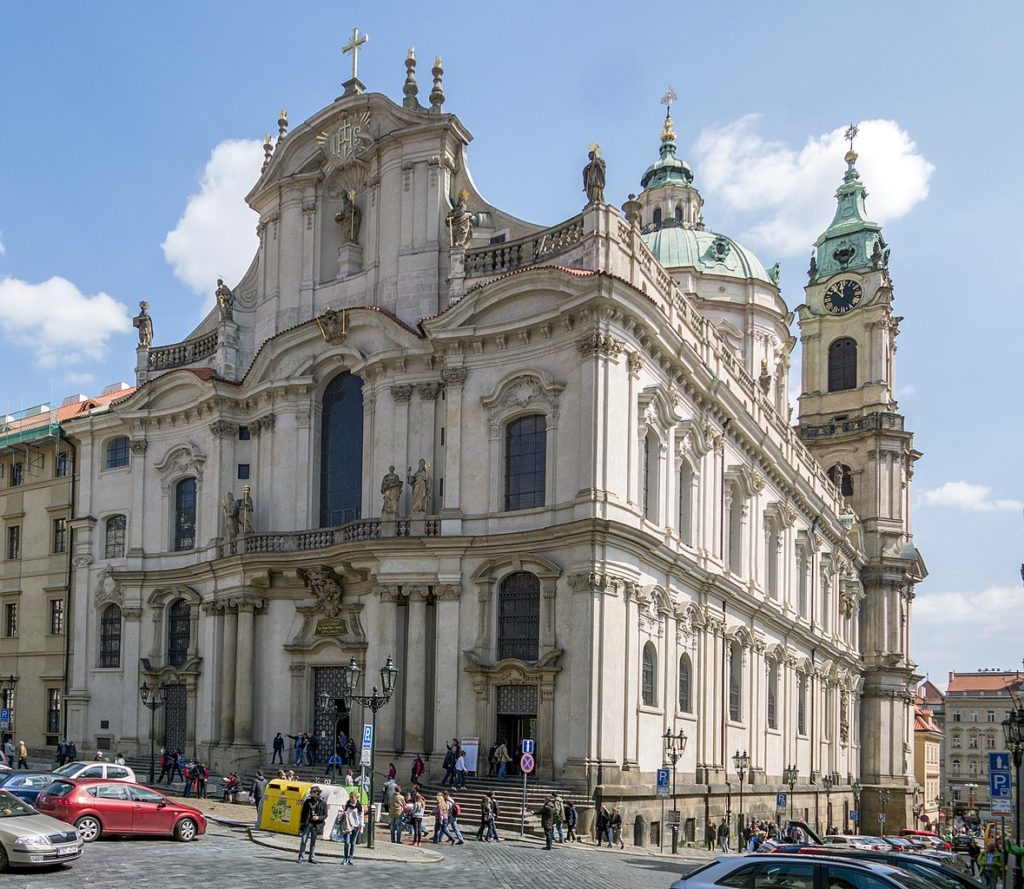
In the left image above, you can see the facade of the San Giorgio Monastery in Venice Italy, It was designed by Andrea Palladio, and it’s a prime example of Venetian Renaissance Architecture. The facade follows a rigid system of proportion and has simple geometries composed of triangles and rectangles. In the right image, you can see St. Nicholas’ Church in the Mala Stana Neighborhood of Prague. Here the facade borrows elements from the Renaissance, but it is a much more complicated and dynamic design. In plan, the facade undulates in multiple different curves, and there are dozens of different elliptical arches throughout the elevation. The use of many complicated curves was an important evolution in Baroque Design when compared to the stiffer and more one-dimensional facades of Renaissance Buildings.


Above are interior images of the same two churches. In the church by Palladio on the left, the nave is mostly grey and white. There’s a big emphasis on the simplified shapes and the overall harmony of the design. This greatly contrasts the Baroque interior of St. Nicholas’s Church on the right. Here, you can see every surface is covered with intricate details and brightly colored materials. The Baroque Church is less about harmony and proportion and more about awe-inspiring brilliance and amazement.


The differences between Renaissance and Baroque Architecture are also very apparent when looking at non-religious buildings. The left image above shows the Biblioteca Marciana in Venice. The facade of the building is completely white, and you can see the rhythm and symmetry within the design. The right image is of the Winter Palace in St. Petersburg, Russia. Similarly, the large facade is symmetrical, but it’s designed with more depth, detail, and complexity. The bright blue color and the gold trim throughout are also big differences found in many Baroque Palaces.

Interested in the buildings of Palladio, Brunelleschi, and Michelangelo? Check out our article on Renaissance Architecture to learn more!
What are the best examples of Baroque Architecture?
Below is a list of some of the greatest examples of Baroque Architecture found anywhere on Earth. The order of the buildings is based on their size, splendor, and overall influence on the evolution of the Baroque Style.
1. Palace of Versailles – Versailles, Île-de-France, France
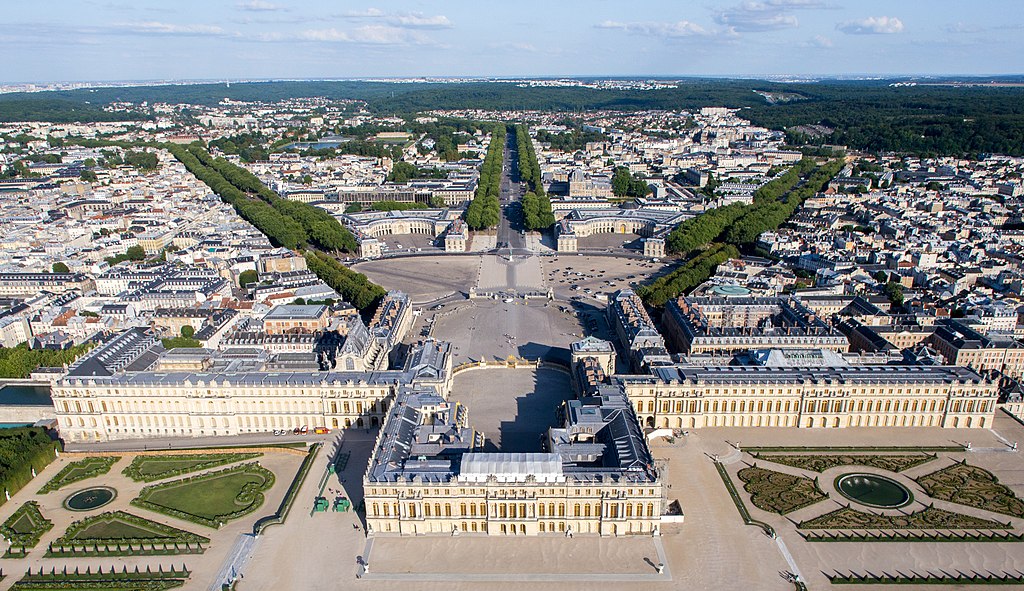
The Palace of Versailles is arguably the most impressive Royal Palace on earth. It was built by one of Europe’s most powerful monarchs, King Louis XIV, who ruled France for over 70 years from 1643-1715. Versailles began as a small hunting lodge that Louis was fond of, and he financed a massive expansion project that created the current building. Louis XIV would eventually move his court to the Palace of Versailles, essentially making it the political heart of France instead of Paris, which was located about 12 miles (19 km) away. Due to its importance, the palace was inscribed as a UNESCO World Heritage Site in 1979.

The Palace of Versailles illustrates every important element in the Baroque Style. The Hall of Mirrors is one of the palace’s most notorious rooms. One side is lined with large arched windows, which let in lots of natural light, while the other side is lined with a massive array of mirrors. During the Baroque Age, mirrored glass was an extremely expensive material, but Louis XIV had ample funds to afford mirrors and other opulent finishes. In the Hall of Mirrors, you will also find dozens of marble & gilded statues, furniture pieces, as well as gold leaf decorations and vibrantly painted Baroque Frescoes.

In addition to the main palace building, Versailles is surrounded by an expansive network of gardens, pathways, and fountains. These all feature more works of Baroque Sculpture, particularly in the ornamental fountains found throughout the grounds. Versailles is one of the earliest examples of a long straight garden stretching along a linear axis. This same design was recreated all across Europe, in places such as the Palace of Caserta in Italy, Schönbrunn Palace in Vienna, and Drottningholm Palace in Stockholm.
2. St. Peter’s Square & The Baldacchino – Vatican City, Rome, Italy
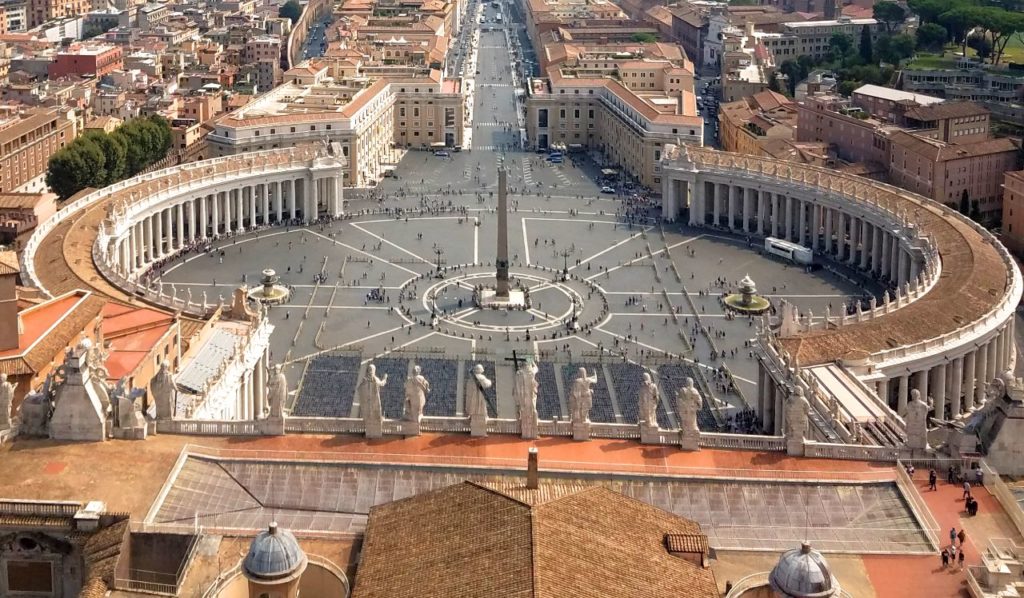
St. Peter’s Square, or Piazza San Pietro, is located within Vatican City in the heart of Rome. The plan of the square corresponds to a former Roman Racetrack. It was designed by Gian Lorenzo Bernini, one of the greatest sculptors of the Baroque Age. Bernini designed many of the fountains within Rome’s great Piazzas, including Piazza Navona and Piazza di Espania. St. Peter’s Square was designed with several distinct elements of Baroque Architecture, such as the elliptical plan, and the intricate baroque sculptures atop the colonnade. The exact center of the piazza is marked by an ancient Egyptian Obelisk, one of several brought to Rome by the Ancient Roman Emperors.
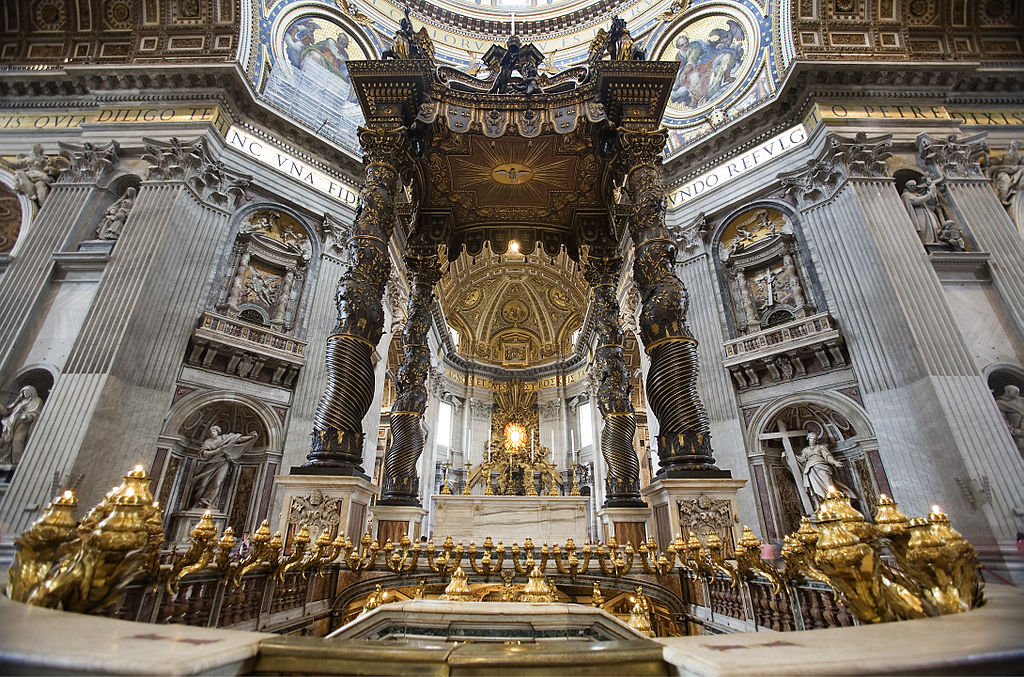
One of Bernini’s most famous sculptures is the Baldacchino, which is located directly below the dome of St. Peter’s. The Baldacchino stands nearly 100 feet (30 meters) tall and is made from cast bronze. It features four Solomonic Columns that support a large canopy. The Solomonic or Spiral Column was a design element that really gained popularity during the Baroque Age. Many Baroque buildings utilize these columns in their facades, and they can also be found in many Baroque Altarpieces.
3. St. Paul’s Cathedral – London, England, United Kingdom
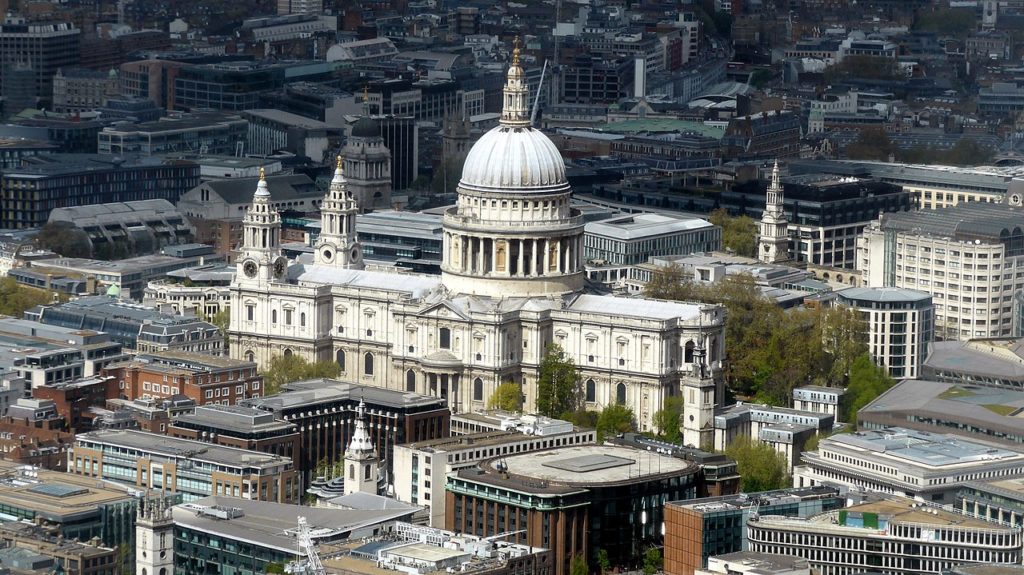
St Paul’s Cathedral, the largest church in the English Capital of London, is one of the world’s greatest examples of Baroque Architecture. It was designed by Sir. Christopher Wren, the English Architect responsible for many of the buildings constructed after the Great Fire of London in 1666. Work began on St. Paul’s in 1675, and it was completed by 1710. The church was the tallest structure in London for over 250 years until modern skyscrapers were built within the city during the 1960s.
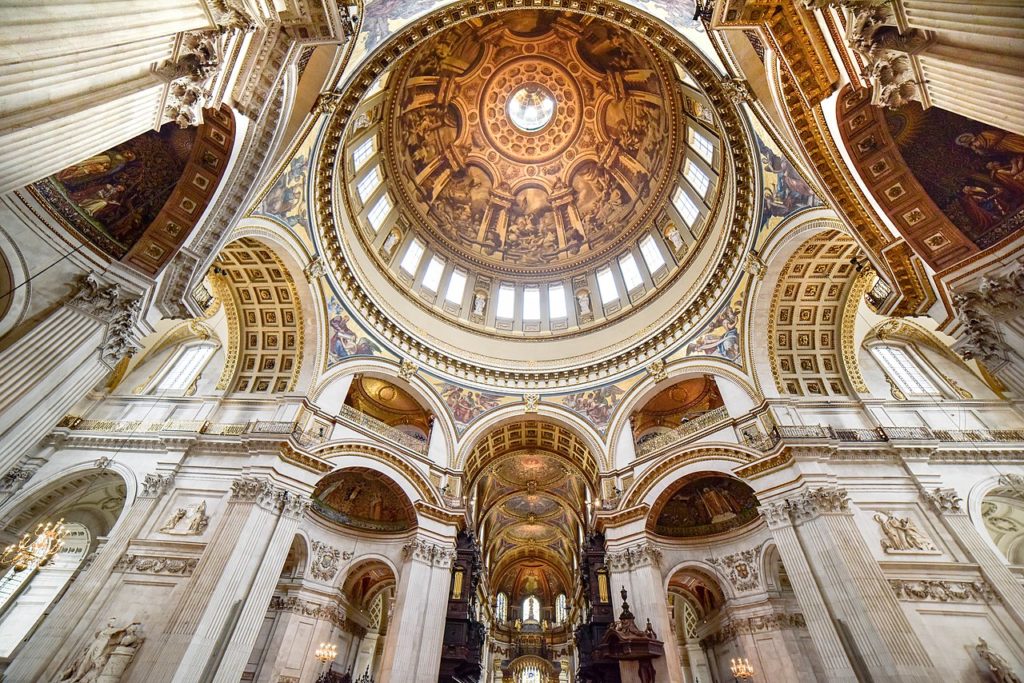
Although the church’s exterior is more refined and austere, the interior of St. Paul’s showcases many of the classical elements of the Baroque Style. There are elaborate frescoes, and gold is used throughout the coffered ceilings and the central dome. The tombs of some of England’s greatest national heroes can be found within the cathedral’s crypt. Lord Horatio Nelson, Arthur Wellesley the Duke of Wellington, and Sir Christopher Wren himself are all buried beneath St. Paul’s along with many other notable historic figures.
4. Winter Palace – St. Petersburg, Russia
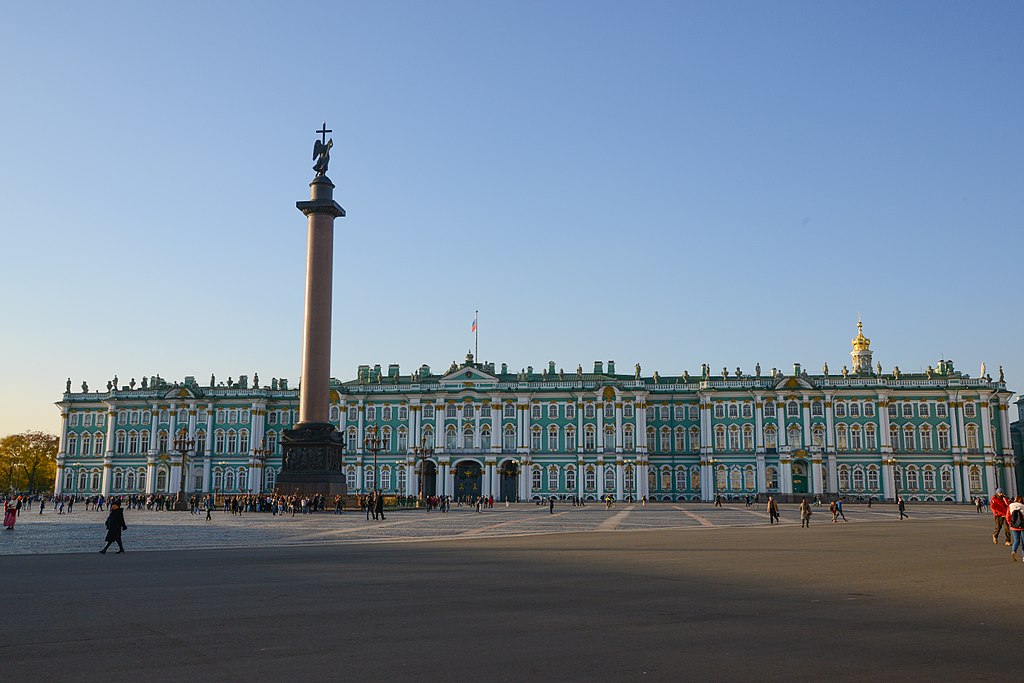
The Winter Palace is one of several massive palaces built by the Romanov Rulers of Russia. Tsar Peter the Great moved the capital of Russia from Moscow to St. Petersburg during the heart of the Baroque Age in 1713. This sparked an immense building campaign that created dozens of important works of Baroque Architecture. The Winter Palace became the official residence of the Russian Emperor starting in 1732. The image above shows the south facade, which faces the Alexander Triumphal Column within the Palace Square. This facade features several of the key elements within Baroque Architecture, including the use of bright colors and lavish materials like gold.
5. Santiago de Compostela Cathedral – Santiago de Compostela, Galicia, Spain

Santiago de Compostela originated as a Romanesque Church with foundations dating back to 1075 CE. It was an important pilgrimage site thanks to the church’s affiliation with Saint James. Christian Pilgrims would travel from all over Europe, taking a popular road known as The Way of St. James. This pathway begins in modern-day France and stretches all the way across the Iberian Peninsula to the Spanish Region of Galicia. This road and the small villages dotted along it are all commemorated as a UNESCO World Heritage Site. The church sits in front of the Praza do Obradoiro, one of the most well-known Plazas in all of Spain.
6. Melk Abbey – Melk, Lower Austria, Austria

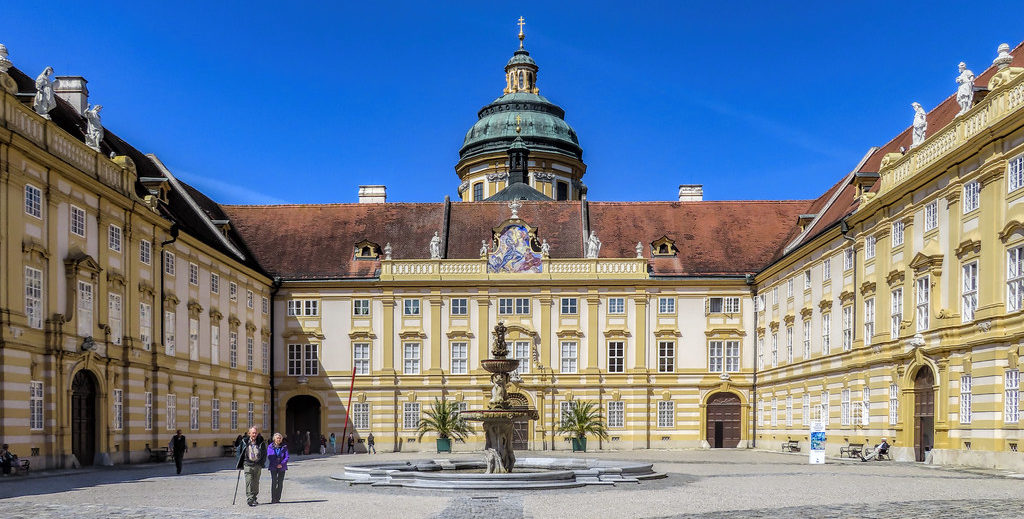
During the Baroque Age, the Archduchy of Austria emerged as one of the most powerful states within the Holy Roman Empire. The Austrian Hapsburg Monarchy commissioned many large works of Baroque architecture. One of these is Melk Abbey, a massive complex of buildings overlooking the Danube River. The abbey originally dates to the 11th century, but it was completely rebuilt in the early 1700s. The grounds include a school, living quarters, a library, and a main church. All of these structures were built in one unified and cohesive design from 1702 to 1736. This makes Melk Abbey one of the most uniform works of Baroque architecture anywhere in Europe.
7. Royal Palace of Caserta – Caserta, Campania, Italy


Designed in a similar manner to the one at Versailles, the Royal Palace of Caserta is one of the larger Baroque Era Palaces ever built. It was constructed by the Kings of Naples, a royal house that controlled much of Southern Italy and Sicily during the Baroque Age. Just like at Versailles, Caserta features a long linear garden that perfectly aligns with the palace’s entrance. This garden is meant to be a processionary experience, and it’s filled with multiple Baroque fountains and sculptures.
8. Les Invalides – Paris, Île-de-France, France


Les Invalides, which loosely translates to the “House of the Disabled,” is a complex of buildings located in Paris. It was originally intended to be a home and hospital for French war veterans, and part of the building still functions as such today. The left image above shows the Golden-domed church, which is the most striking building within the overall Les Invalides Complex. Today, this church contains the tomb of Napoleon Bonaparte, one of France’s most influential historical figures.
9. Trevi Fountain – Rome, Lazio, Italy

The Trevi Fountain is one of the most influential works of Baroque Architecture found anywhere in Rome. It was constructed from 1732-1762, and it shows a perfect blend of both sculpture and architecture. The fountain utilizes many of the typical elements found in the Baroque Style. The marble statues are fluid and lively, and the design features many elements from Ancient Greek and Roman mythology. Many people make sure to toss a coin into the fountain while visiting Rome – it’s thought that anyone who does this will someday return to the eternal city.
Like Architecture of Cities? Sign up for our mailing list to get updates on our latest articles and other information related to Architectural History.
10. Schönbrunn Palace – Vienna, Austria

Schönbrunn Palace is another one of Europe’s great Royal Residences, and Schönbrunn may be closest in size and grandeur when compared to France’s Versailles. It was used as a summer residence for the Royal House of Hapsburg, and it’s located about 2 1/2 miles from central Vienna. The design features all of the typical elements of Baroque architecture, and the sheer size and splendor of the palace and gardens embody the luxurious lifestyles of European Royal Families during the Baroque Age.
11. Zwinger Palace – Dresden, Saxony, Germany

The Zwinger Palace is another example of palatial Baroque Architecture. After Louis XIV commissioned the Palace of Versailles, he started a sort of “arms race” amongst all of the other major European Powers. The European Rulers felt the need to build their own massive palaces to compete with the French and with one another. The Zwinger Palace, located in Dresden Germany, was commissioned by Augustus the Strong, the ruler of the Germany Electorate of Saxony from 1694-1733. Although the Zwinger was heavily damaged during WWII bombing raids on the city of Dresden, today much of the original structure has been rebuilt and restored.
12. Piazza Navona – Rome, Lazio, Italy

Piazza Navona is another famous Baroque Piazza in Rome, and like St. Peter’s Square, it was built over the remains of an Ancient Roman Racetrack. It’s popular with both tourists and locals, thanks to its incredible ambiance and impressive architecture. The Fontana dei Quattro Fiumi, or the Fountain of the Four Rivers, is a Baroque Fountain located within the center of the square. It was designed by Gian Lorenzo Bernini in the mid-1600s and it sits in front of a Baroque Style Church named for Saint Agnese.
13. Sant’ignazio – Rome, Lazio, Italy

The Church of Sant’ignazio, or Saint Ignatius, is a smaller church within Rome that’s mostly known for its incredible frescoed ceiling. The fresco was painted by one of the most influential painters of the Baroque Age, Andrea Pozzo. Pozzo utilizes an abundance of colors, figures, and forms to create one of the Baroque Age’s most daring paintings. The forced perspective makes it look as if the church’s roof has been ripped off, revealing a glimpse of the heavens. The idea that art had to be moving and striking was important in the Baroque Age when the Catholic Church was eager to inspire the populations to keep their faith in a time when the Protestant Reformation was raging in parts of Europe.
14. Royal Palace of Madrid – Madrid, Spain


The Royal Palace of Madrid is another one of the many Baroque residences built by Europe’s powerful monarchies. The Spanish King Philip V commissioned the construction in 1735, during the later stages of the Baroque Age. He wanted to create a primary residence within the Spanish capital, in addition to El Escorial Palace which was completed during the Renaissance Age far outside the city. The palace is centrally located within Madrid, with the south facade facing the Cathedral of Almudena. There’s also a large array of parks and gardens located around the palace including Campo de Moro, and the Jardines de Sabatini.
15. Santa Maria Maggiore – Rome, Lazio, Italy

Santa Maria Maggiore is one of four major Papal Basilicas located within Rome. The church has foundations dating all the way back to the 5th century CE. Over time several major renovations and restorations created the current form of the church. The loggia at the center of the front elevation was completed in 1743 by Pope Benedict XIV, and many modifications to the interior also occurred during the Baroque age. Many of Rome’s churches were continuously modified by the Popes, and in addition to Santa Maria Maggiore, large-scale Baroque Renovations were conducted on St. Peter’s Basilica and the Church of St. John the Lateran.
16. Drottningholm Palace – Stockholm, Sweden
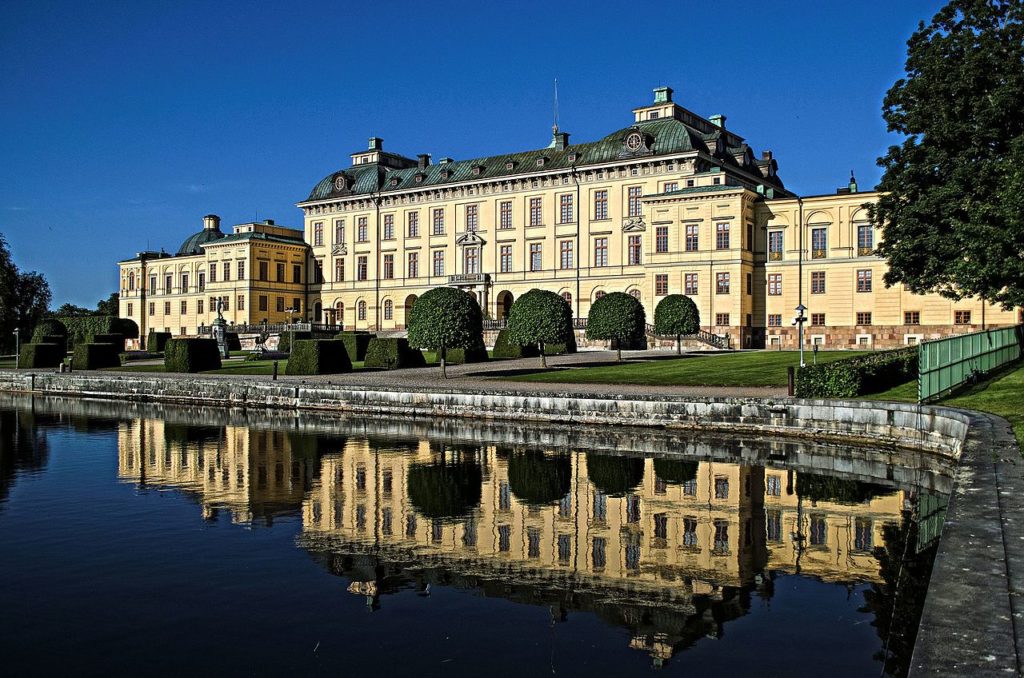
Drottningholm Palace is one of the most impressive palaces in all of Europe, on par with other well-known examples such as the Château de Versailles in France and Schönbrunn Palace in Austria. Construction began on the palace in the heart of the Baroque Age in 1662. The Swedish Royals had a city residence located within the center of Stockholm, and Drottningholm Palace served as a second home about 7.5 miles (12 km) away. Drottningholm Palace also contains a vast Baroque-Style Garden. Today, it’s one of the most visited sites in all of Stockholm, and it’s the only UNESCO-listed site within the city limits.
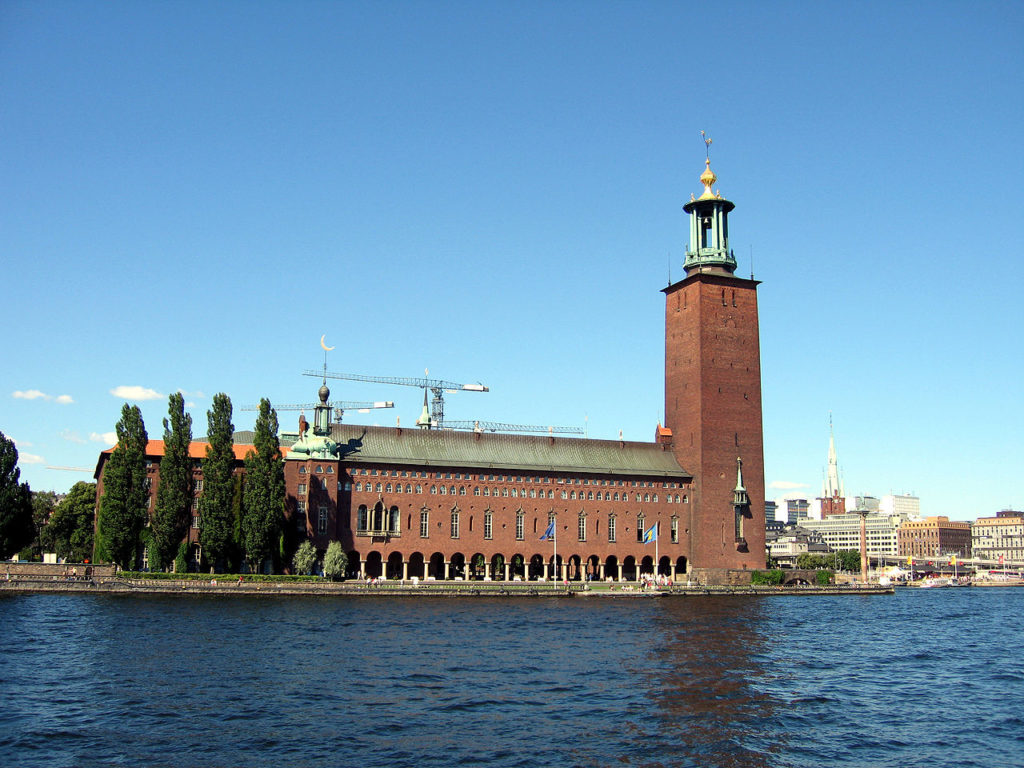
Interested in Stockholm? Check out our article on the Architecture of Stockholm to learn more!
17. Karlskirche – Vienna, Austria
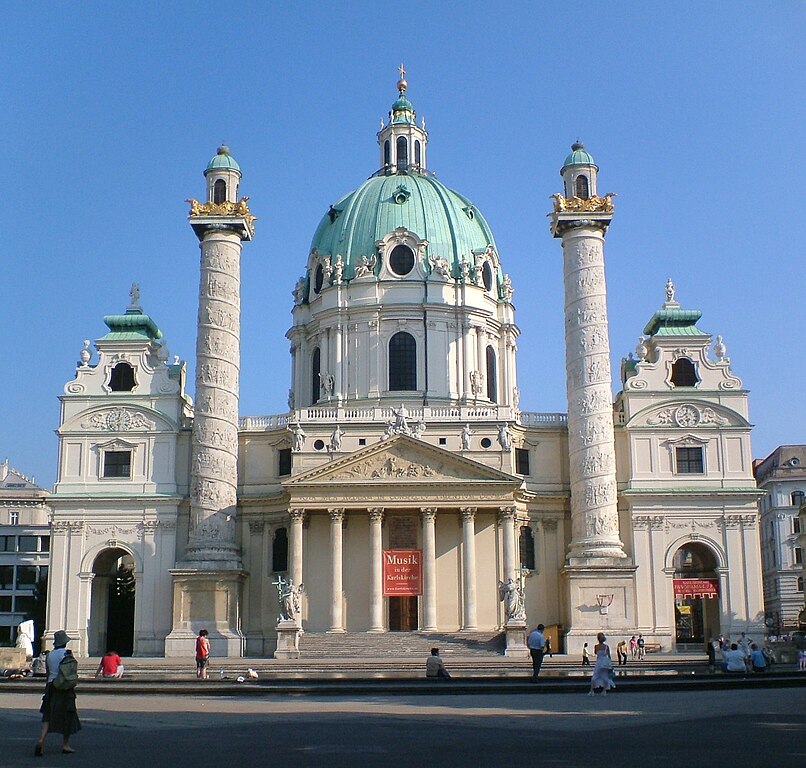

Karlskirche is one of the larger churches within the Austrian Capital of Vienna. Vienna’s principal church is a Gothic Cathedral named for St. Stephen, but the Karlskirche is another impressive work of religious architecture within the city. It’s located just off of the Ringstrasse, a famous road that encircles the historic core of Vienna. Austria reached its peak under the House of Hapsburg and it was one of the most powerful states in Europe during the Baroque Age. As a result, many incredible works of Baroque architecture can be found throughout cities in Austria, such as Vienna, Salzburg, Graz, and Innsbruck.
18. Nymphenburg Palace – Munich, Bavaria, Germany
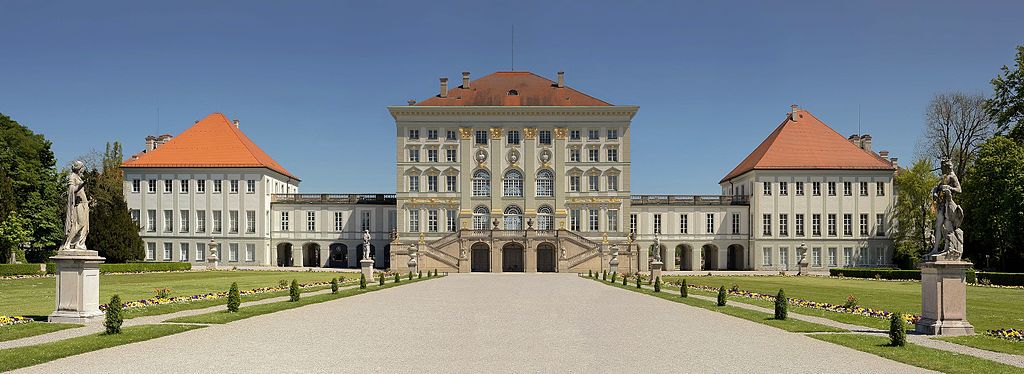
Photo by Richard Bartz from Wikimedia Commons
Bavaria was once ruled by the Royal House of Wittelsbach. It was one of the larger states within the Holy Roman Empire, and at the start of the Baroque Age, it was elevated from a Duchy to an Electorate. This was a move that signified the important status of Bavaria, which was a growing economic and cultural center during the 16th and 17th centuries. In 1664, the rulers of Bavaria built Nymphenburg Palace just outside their capital city, Munich. Nymphenburg Palace was then continually modified over time. The exterior gardens were completed in 1789, and many Rococo details were added to the interior later on.
19. Mexico City Metropolitan Cathedral – Mexico City, Mexico

During the era of European Colonialism, many works of Baroque Architecture were completed – particularly by the Spanish and Portuguese in the Americas. One of the greatest examples of this is the Mexico City Metropolitan Cathedral. The church sits atop some much older Aztec ruins, and several other important Aztec monuments were once located in this part of the city. It was built by the Spanish over the course of several centuries, beginning in the late 1500s and ending during the early 1800s. Most of the front facade is Baroque, designed in a similar manner to that of Santiago de Compostela in Spain.
20. St. Nicholaus Church – Prague, Czech Republic

St. Nicholaus Church, located in the Malá Strana neighborhood of Prague, is one of two different churches in the city named for St. Nicholaus. Construction began on the current church in the year 1704, and it replaced a much older Gothic Church. The entire building took 51 years to complete, and it was done completely in one harmonious style. Because of this, it is often regarded as the most important work of Baroque Architecture anywhere in Prague. The exterior of the church shows several typical Baroque elements such as the undulating curvature of the front facade.

Interested in Prague? Read our article on the Architecture of Prague to learn more!
21. San Carlo Alle Quattro Fontane – Rome, Lazio, Italy
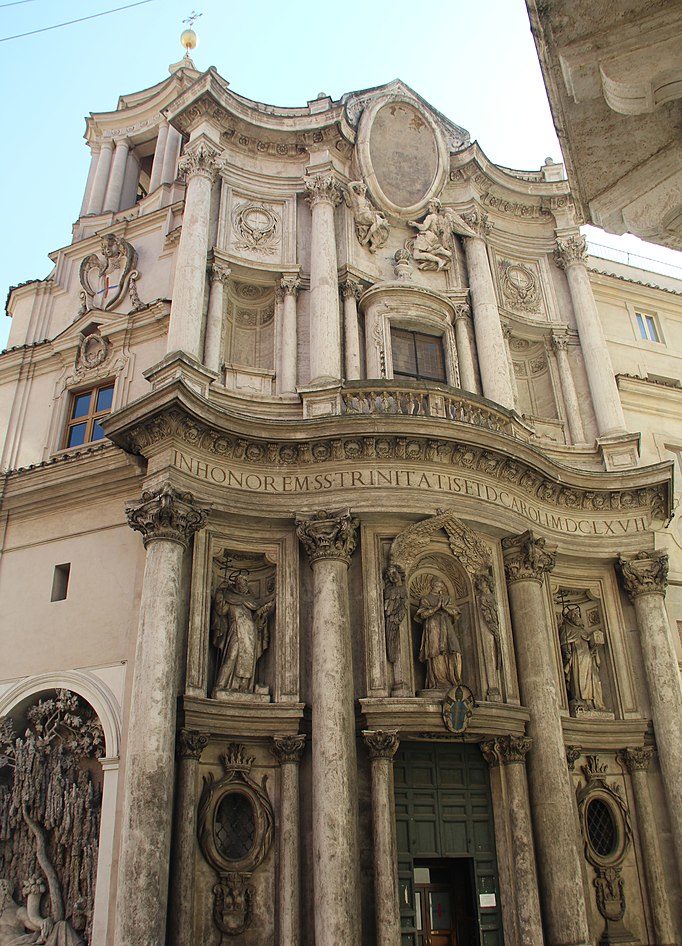
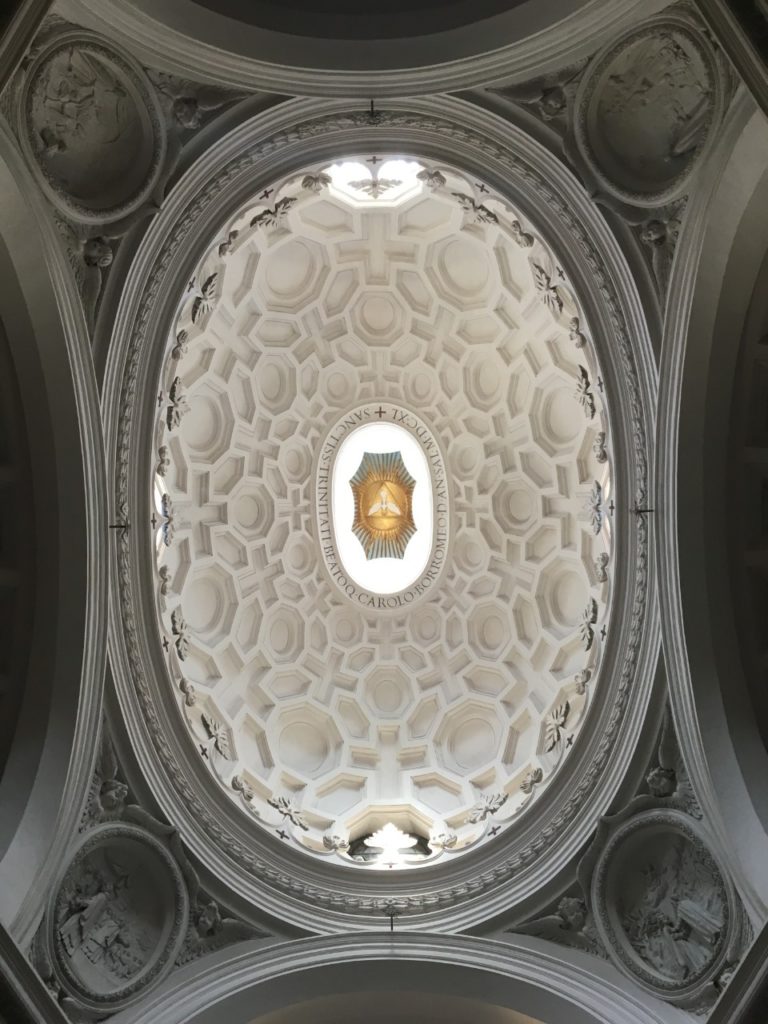
The use of complicated geometries and dynamic shapes and forms is one of the key elements in Baroque Architecture. The Church of San Carlo Alle Quattro Fontane in Rome probably embodies this idea more than any other building on this list. In the left image above, you can see the church’s front facade. The facade curves and undulates in both plan and elevation, and there are many elaborately carved niches and elliptical fenestrations. This complexity is repeated inside, particularly in the elliptical dome. The church was designed by Francesco Borromini, one of the greatest architects of the Baroque Age. The Church of San Carlo is often regarded as his greatest achievement, and it’s easy to see why when you look at how complicated Borromini’s design is.
22. Noto Cathedral – Noto, Sicily, Italy
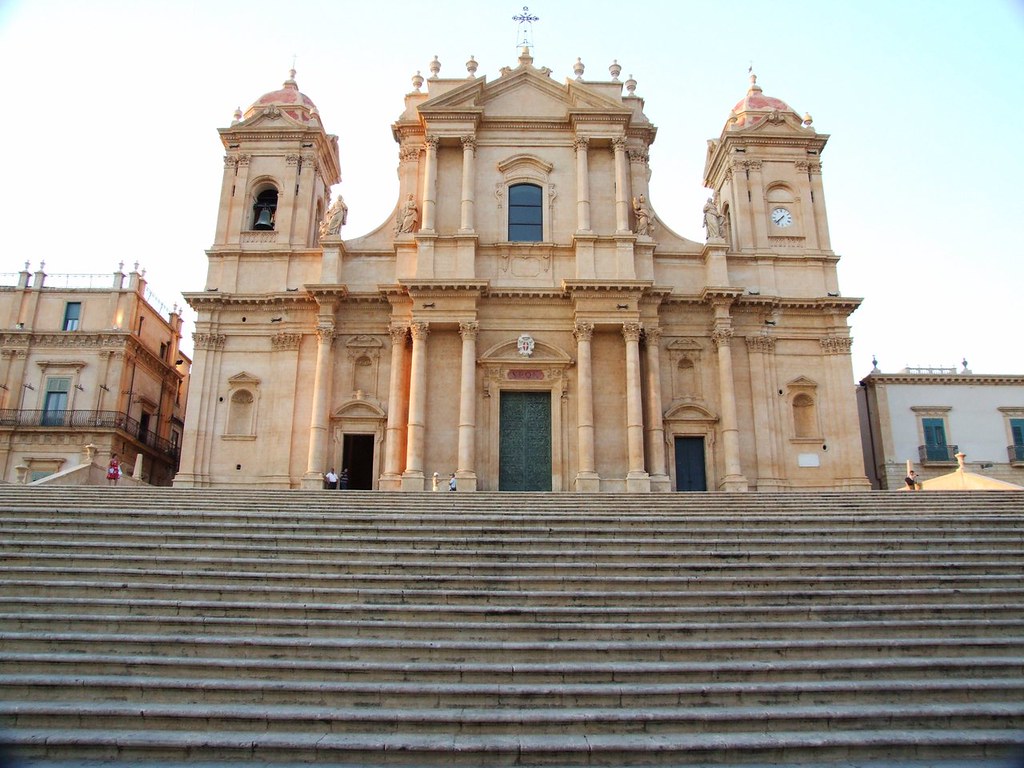
Noto is a small city in Eastern Sicily, located 57 miles (92 km) south of Catania. In 1693, this region of Sicily was devastated by a magnitude 7.4 earthquake, which completely destroyed many priceless works of architecture. Cities in the area such as Noto, Modica, Caltagirone, and Ragusa all rebuilt important buildings in the Baroque Style. This collection of Baroque Architecture is combined into one UNESCO World Heritage Site known as the Late Baroque Towns of the Val di Noto. Noto Cathedral is one of the larger buildings from the reconstruction program. The church and the monumental staircase leading up to it were completed in 1776, in the final stages of the Baroque movement.
23. Old Royal Naval College – London, England, United Kingdom
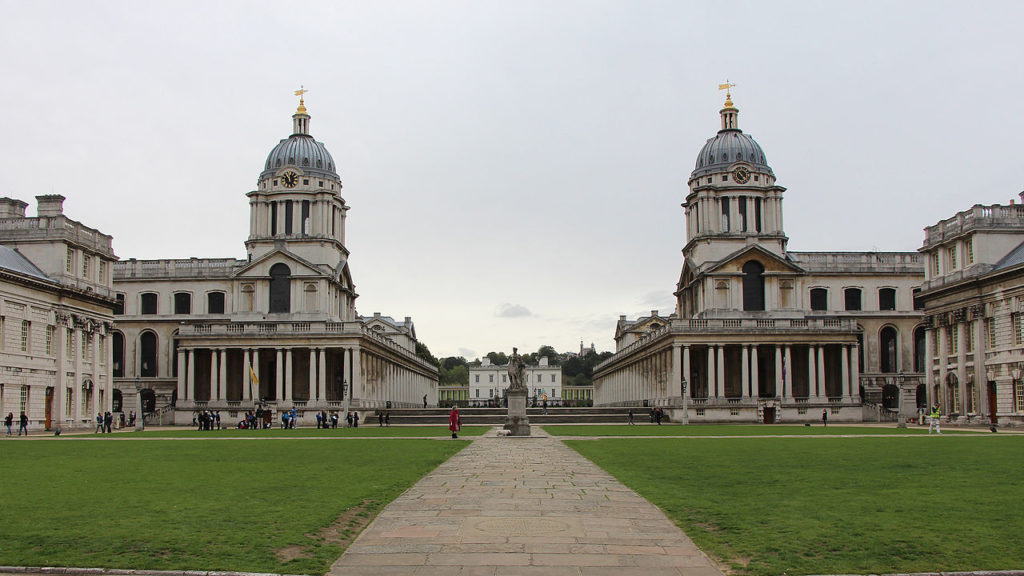
The Old Royal Naval College of London is another fantastic example of the work of Sir. Christopher Wren. He was a Baroque Architect who worked mostly in and around London. Construction began on the building in 1696, and it was completed by 1712. Wren’s symmetrical design for the exterior is similar to that of St. Paul’s Cathedral, a building he designed a few miles up the Thames River in central London. Both buildings are a little more reserved and modest when compared to many of the other extravagant Baroque structures on this list. In fact, many people think Wren’s designs more closely resemble works of Neoclassical Architecture rather than Baroque.
24. Santa Maria Della Salute – Venice, Veneto, Italy
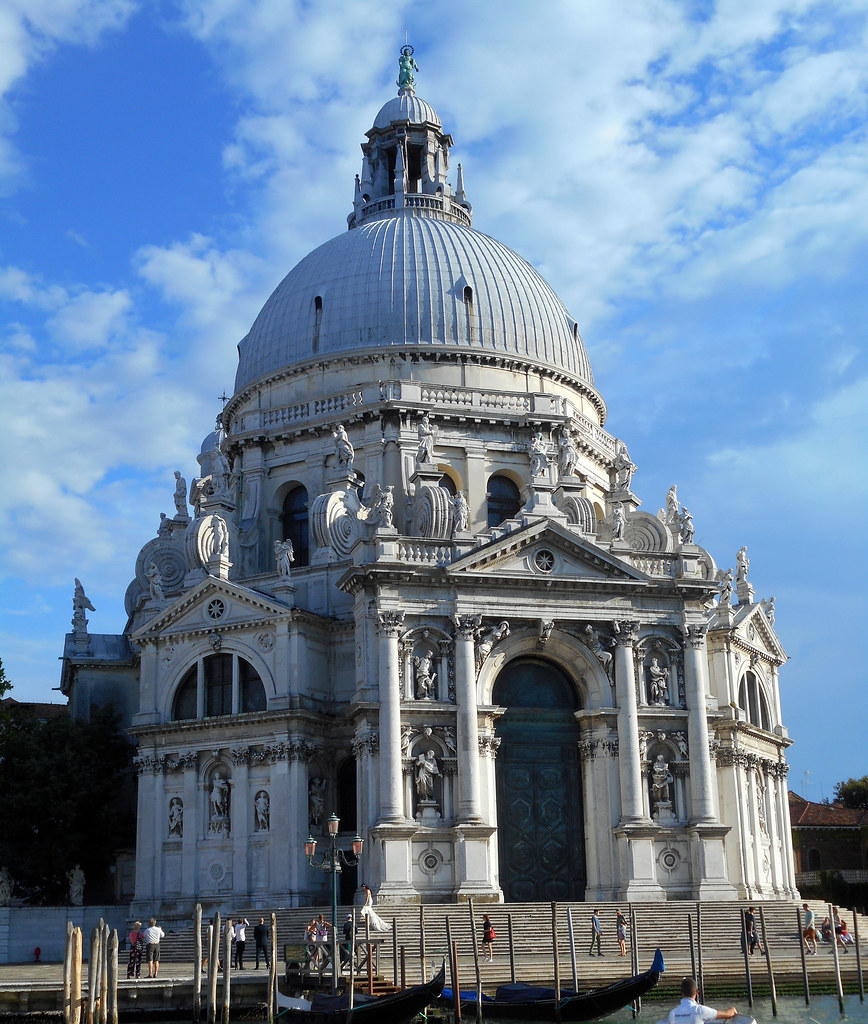
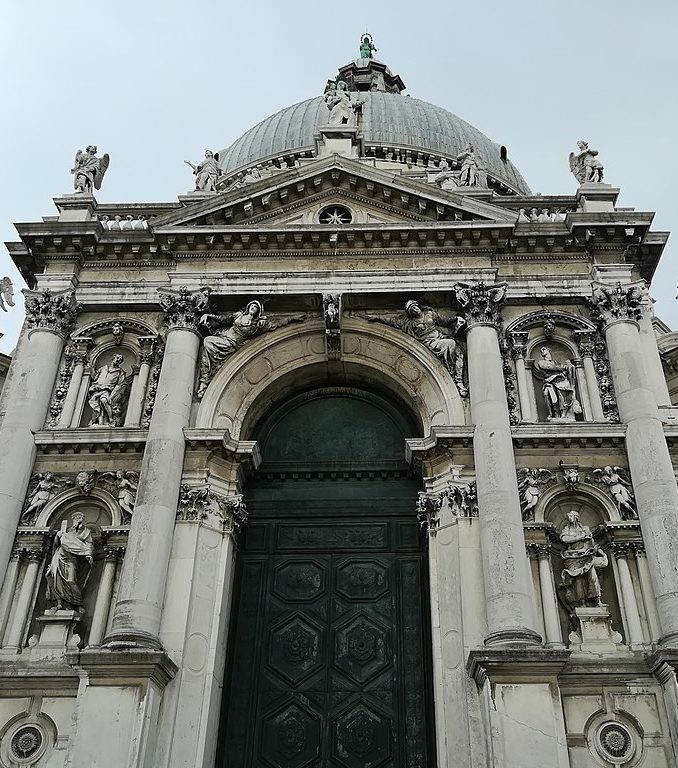
Santa Maria Della Salute is by far the most iconic Baroque building in all of Venice. Work began on the church in 1631, and it incorporates many of the distinct characteristics of Baroque Architecture. The exterior is made entirely of the same Istrian Marble that is found throughout Venice. The marble is carved with statuary niches, columns, pediments, and other elements typically found in Classical Architecture. Santa Maria Della Salute overlooks the waters of the Grand Canal in the heart of the city, and it’s one of the architectural highlights of Venice along with its many Gothic and Renaissance buildings.
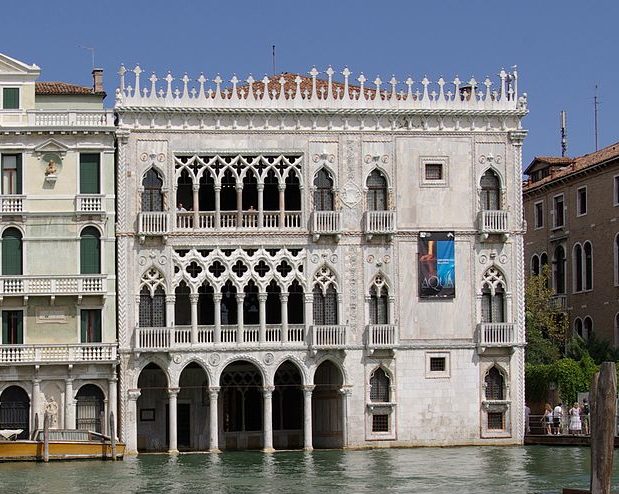
Interested in Venice? Check out our article on the Architecture of Venice to learn more!
25. Peterhof Palace – St. Petersburg, Russia

Like the Winter Palace, Peterhof Palace is another great example of Baroque Architecture located within St. Petersburg. Peterhof Palace was commissioned by Tsar Peter the Great, who ruled the Russian Empire from 1682 until 1725. The Palace Gardens contain one of the most elaborate Baroque fountains in the entire world. The immense size of the fountain and the multiple gilded statues were meant to show off the wealth and power of the Russian Tsar and to compete with the other great palaces of Europe. Along with several other buildings in St. Petersburg, the Peterhof Palace is listed as a UNESCO World Heritage Site.
Late Baroque & Rococo Architecture
At the tail end of the Baroque Age, a new style of architecture known as Rococo began to emerge. Rococo is an even more flashy and ostentatious form of architecture. In Rococo buildings, every surface is completely covered with details and colors. Many people regard Rococo as a more evolved and adapted version of Late Baroque.

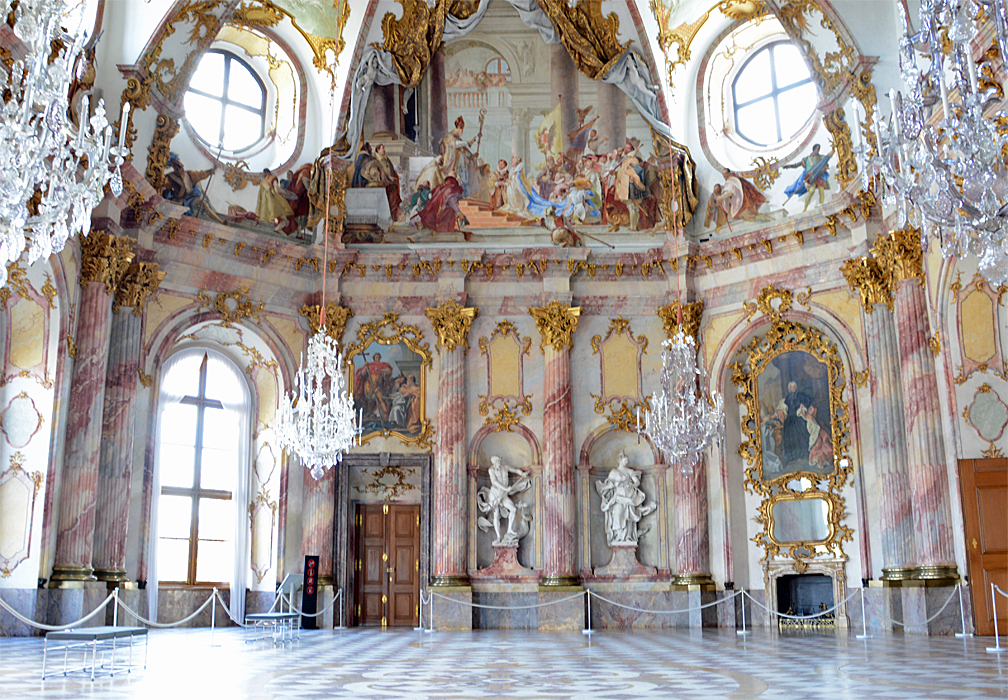
(right) Photo by Andreas Faessler from Wikimedia Commons
The Rococo Style began in France and became popular in large parts of Europe, including Germany, Austria, and Russia. In Germany in particular, you can find an abundance of Rococo buildings. The images above show two spaces within the main Royal Palace in Würzburg Germany. The building, known as the Würzburg Residenz, embodies the over-the-top nature of Rococo Architecture.


The above two photos both show the interior of the Munich Residenz, which was an urban palace for the Royal House of Bavaria. Here in Munich, the Rococo interiors are essentially designed to do one thing: show off as much gold leaf as possible. This idea of absolute extravagance was big in the Rococo Age. Although you still see similar ideas in Baroque Architecture, here at the Rococo Munich Residenz, it’s taken to a whole new level.
Neo-Baroque & Baroque Revival Architecture
Like many other building styles, Baroque Architecture saw a strong rebirth during the Revival Period in Architecture. In addition to other styles like Neoclassical and Gothic Revival, Baroque Revival Architecture was popularized in the late 19th and early 20th centuries.

This picture shows a Baroque Revival Style (or Neo-Baroque Style) building in Dresden Germany. It’s known as the Semperoper, and it serves as the main opera house in Dresden. The building is influenced by both Renaissance and Baroque Architecture. However, the main entrance as well as many interior elements are distinctly Baroque. The Semperoper opened in 1841 and is located very close to other important Baroque buildings in Dresden, such as the Zwinger Palace and the Frauenkirche.

Budapest is also a city in Europe that’s filled with many different forms of Revival Architecture. The most famous of these is probably the Budapest Parliament Building, which is designed in Gothic Revival. The above image shows a Baroque Revival building in Budapest known as the Széchenyi Thermal Bath. The bath is located inside the main park in the city, and it takes advantage of Budapest’s abundance of hot springs.
One similar architectural form is known as the Second Empire Style. Second Empire Architecture combines Baroque and Neoclassical Elements to create a completely new building typology. The image below shows the Quebec Parliament Building in Quebec City Canada.
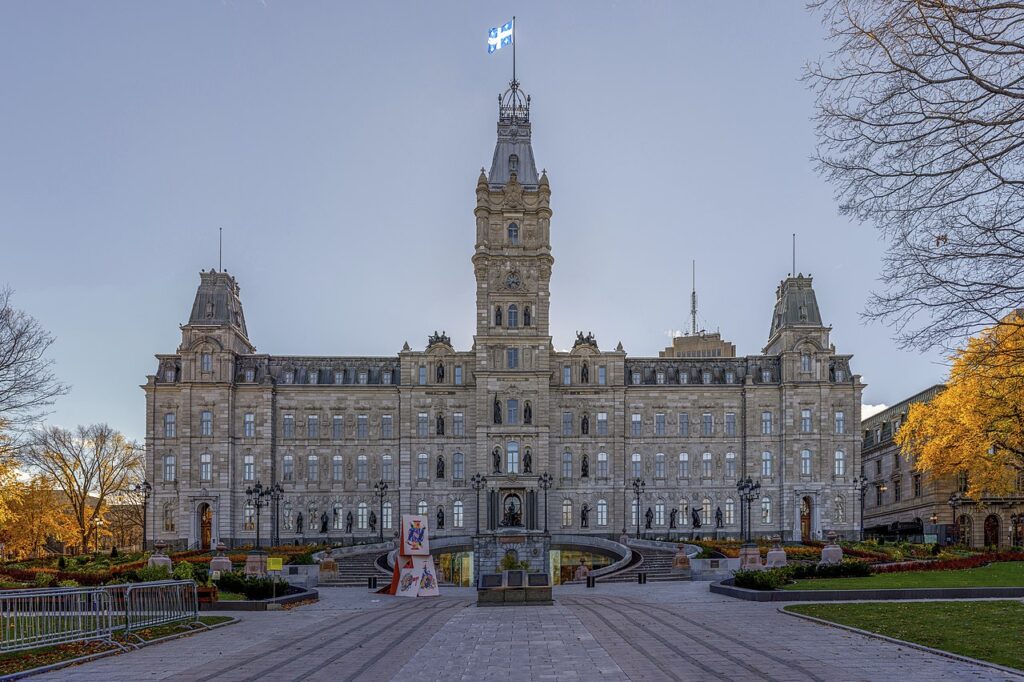
Baroque Architecture Today
Baroque Architecture is one of the world’s first intercontinental building forms. It spread from Europe to other parts of the globe thanks to the many European Colonies that existed during the Baroque Age. Many Baroque palaces, churches, and public squares can be found in cities throughout the world, and some of the most recognizable structures on earth such as the Palace of Versailles and the Trevi Fountain were designed in the Baroque Style. All of these works of Baroque Architecture still serve their original primary function: inspiring people and filling us with a sense of awe and wonder.
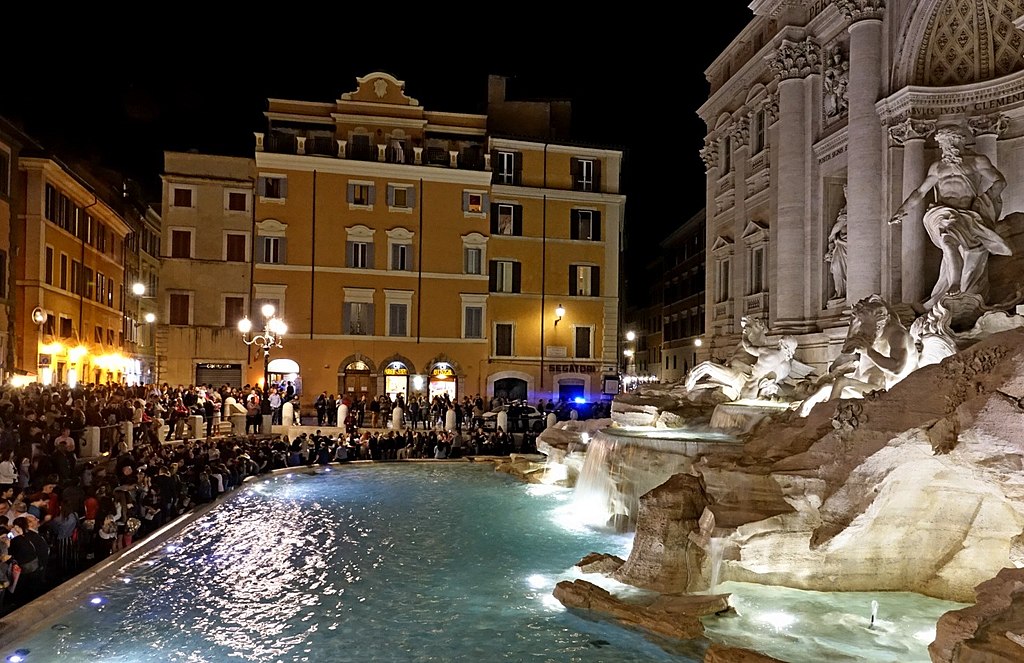

- About the Author
- Rob Carney, the founder and lead writer for Architecture of Cities has been studying the history of architecture for over 15 years.
- He is an avid traveler and photographer, and he is passionate about buildings and building history.
- Rob has a B.S. and a Master’s degree in Architecture and has worked as an architect and engineer in the Boston area for 10 years.
Like Architecture of Cities? Sign up for our mailing list to get updates on our latest articles and other information related to Architectural History.

